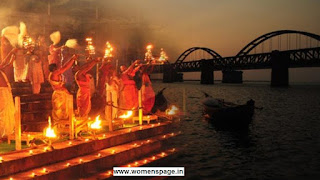Vishnu sahasranamam lyrics
Shuklam Baradaram Vishnum, Sasi Varnam Chatur Bhujam,
Prasanna Vadanan Dyayet, Sarva Vignoba Sandaye
Vyasam Vasishtanaptharam, Sakthe Poutramakalmasham,
Parasarathmajam vande, Shukathatham Taponidhim.
Vyasa Vishnu Roopaya, Vyasa Roopaya Vishnave,
Namo Vai Brahma Vidaya, Vasishtaya Namo Nama.
Avikaraya Shuddhaya, Nityaya Paramatmane,
Sadaika Roopa Roopaya, Vishnave Sarva Jishnave.
Yasya Smarana Mathrena, Janma Samsara Bandhanath.
Vimuchayate Nama Tasmai, Vishnave Prabha Vishnave
OM Namo Vishnave Prabha Vishnave
Shri Vaisampayana Uvacha
Shrutva Dharmaneshena, Pavanani Cha Sarvasha,
Yudishtra Santhanavam Puneravabhya Bhashata
Yudishtra Uvacha
Kimekam Daivatham Loke, Kim Vapyegam Parayanam,
Sthuvantha Kam Kamarchanda Prapnyur Manava Shubham,
Ko Dharma sarva Dharmanam Paramo Matha
Kim Japanmuchyathe Jandur Janma Samsara Bhandanat
Sri Bheeshma Uvacha
Jagat Prabhum Devadevam Anantham Purushottamam,
Stuvan Nama Sahasrena, Purusha Sathathothida,
Tameva Charchayan Nityam, Bhaktya Purushamavyayam,
Dhyayan Sthuvan Namasyancha Yajamanasthameva Cha,
Anadi Nidhanam Vishnum Sarva Loka Maheswaram
Lokadyaksham Stuvannityam Sarva Dukkhago Bhaved,
Brahmanyam Sarva Dharmagnam Lokanam Keerthi Vardhanam,
Lokanatham Mahadbhootham Sarva Bhootha Bhavodbhavam
Aeshame Sarva Dharmanam Dharmadhika Tamo Matha,
Yad Bhaktyo Pundarikaksham Stuvyr-Archanayr-Nara Sada,
Paramam Yo Mahatteja, Paramam Yo Mahattapa
Paramam Yo Mahad Brahma Paramam Ya Parayanam
Pavithranam Pavithram Yo Mangalanam Cha Mangalam,
Dhaivatham Devathanam Cha Bhootanam Yo Vya Pitha
Yatha Sarvani Bhoothani Bhavandyathi Yugagame
Yasmincha Pralayam Yanthi Punareve Yuga Kshaye
Tasya Loka Pradhanasya Jagannatathasya Bhoopathe
Vishno Nama Sahasram Me Srunu Papa Bhayapaham
Yani Namani Gounani Vikhyatani Mahatmanah
Rishibhih Parigeetani Tani Vakshyami Bhootaye
Rishir Namnam Sahsrasya Veda Vyaso Maha Munih
Chando Aunustup Stada Devo Bhagawan Devaki Sutha
Amruthamsu Bhavo Bhhejam Shakthir Devaki Nandana
Trisama Hridayam Tasya Santhyarthe Viniyujyade
Vishnum Jishnum Mahavishnum Prabha Vishnun Maheswaram
Aneka Roopa Daityantham Namami Purushottamam
Sri Vishnu Sahasranama Stotra
Asya Shriivishhnor-Divyasahasranaama Stotra Mahaa Mantrasya
Shri Vedavyaaso Bhagavaan Rishhih
Anushhtuph Chhandah
Shri Mahaavishnuh Paramaatmaa Shriimannaaraayano Devataa
Amritaam Shuudbhavo Bhaanuriti Bieejam
Devakee Nandanah Srashteti Shaktih
Udbhavah Kshobhano Deva Iti Paramo Mantrah
Shankha-Bhrinnandakii Chakriiti Keelakam
Shaarngadhanvaa Gadaadhara Ityastram
Rathaangapaani Rakshobhya Iti Netram
Trisaamaa Saamagah Saameti Kavacham
Aanandam Parabrahmeti Yonih
Rituh Sudarshanah Kaala Iti Digbandhah
Shri Vishvaruupa Iti Dhyaanam
Shri Mahaavishhnu Priityartham Sahasranaama Jape Viniyogah
Dhyanam
Ksheerodanvath Pradese Suchimani Vilasad Saikathe Maukthikanam
Malaklupthasanastha Spatikamani Nibhai Maukthiker Mandithangah
Shubrai-Rabrai-Rathabrai Ruparivirachitai Muktha Peeyusha Varshai
Anandi Na Puniyadari Nalina Gadha Sankapanir Mukundaha
Bhoo Padau Yasya Nabhi R Viyadasu Ranila Schandra Suryaau Cha Nether
Karnavasasiro Dhaumugamabhi Dhahano Yasya Vasteyamabhdhi
Anthastham Yasya Viswam Sura Nara Khaga Go Bhogi Gandharva Dhaityai,
Chitram Ram Ramyathe Tham Thribhuvana Vapusham Vishnumeesam Namami
Om Namo Bhagavate Vasudevaya
Santhakaram Bujaga Sayanam Padmanabham Suresam,
Viswadharam Gagana sadrusam Megha Varnam Shubangam
Lakshmi Kantham Kamala Nayanam Yogi Hrid Dyana Gamyam
Vande Vishnum Bava Bhayaharam Sarva Lokaika Nadham
Megha Syamam Peetha Kouseya Vasam Srivatsangam Kausthuboth Bhasithangam
Punyopetham Pundareekayathaksham Vishnum Vande Sarva Lokaika Natham
Namah Samasta Bhutanam-Adi-Bhutaya Bhubrite
Aneka-Ruparupaya Vishnave Prabha-Vishnave
Sasanga Chakram Sakerita Kundalam Sappeethavastram Saraseruhekshanam,
Sahara Vaksha Sthala Shobhi Kousthubham Namai Vishnum Sirasa Chaturbhujam
Chayayam Parijatasys Hemasimhasanopari,
Aseenamam Budha Syama Mayathakashamalangrutham,
Chandranana Chathurbahum Sreevatsangitha Vakshasam,
Rukmani Satyabhamabhyam Sahitham Krishnamasraye.
Vishnu Sahasranamam Stotra Lyrics
Om Vishvam Vishnur-Vashatkaro Bhuta-Bhavya-Bhavat-Prabhuh
Bhutakrud Bhutabhrud Bhavo Bhutatma Bhuta-Bhavanah
Putatma Paramatma Cha Muktanam Parama Gatih
Avyayah Purusha Sakshi Kshetrajno-Kshara Eva Cha
Yogo Yogavidam Neta Pradhana-Purushesvarah
Narasimha-Vapu Shriman Kesavah Purushottamah
Sarvah Sarvah Sivah Sthanur-Bhutadir-Nidhir-Avyayah
Sambhavo Bhavano Bharta Prabhavah Prabhur-Isvarah
Svayambhuh Sambhur-Adityah Pushkaraksho Mahasvanah
Anandi-Nidhano Dhata Vidhata Dhaturuttamah
Aprameyo Hrishikesah Padma-Nabho-Mara-Prabhuh
Visvakarma Manustvashta Sthavishtah Sthaviro-Dhruvah
Agrahyah Sasvatah Krishno Lohitakshah Pratardanah
Prabhutas-Trikakubdhama Pavitram Mangalam Param
Isanah Pranadah Prano Jyeshthah Sreshthah Prajapatih
Hiranyagarbho Bhugarbho Madhavo Madhusudanah
Ishvaro Vikrami Dhanvi Medhavi Vikramah Kramah
Anuttamo Duradharsah Krutajnah Krutiratmavan
Suresah Sharanam Sharma Vishvaretah Prajabhavah
Ahah Samvasaro Vyalah Pratyayah Sarvadarshanah
Ajah Sarveshvarah Siddhah Siddhih Sarvadir Acyutah
Vrushakapir Ameyatma Sarva-Yoga-Vinihshrutah
Vasur Vasumanah Satyah Samatma Sammitah Samah
Amoghah Pundarikaksho Vrusha-Karma Vrushakrutih
Rudro Bahushira Babhrur Vishva-Yonih Shuchi Sravah
Amrutah Shashvata-Sthanur Vararoho Maha-Tapah
Sarvagah Sarva-Vid-Bhanur Vishvaksheno Janardanah
Vedo Vedavid Avyango Vedango Vedavit Kavih
Lokadhyakshah Suradhyaksho Dharmadhyakshah Krutakrutah
Chaturatma Chaturvyuhas Chaturdamstras Chatur-Bhujah
Bhrajishnur-Bhojanam Bhokta Sahishnur Jagad-Adhijah
Anagho Vijayo Jeta Vishva-Yonih Punar-Vasuh
Upendro Vamanah Pramshur Amoghah Suchir Urjitah
Atindrah Samgrahah Sargo Dhrutatma Niyamo Yamah
Vedyo Vaidyah Sada-Yogi Viraha Madhavo Madhuh
Atindriyo Mahamayo Mahotsaho Mahabalah
Mahabuddir Mahaviryo Mahasaktir Mahadyutih
Anirdesyavapuh Shriman Ameyatma Mahadridhruk
Maheshvaso Mahibharta Shrinivasah Satam Gatih
Aniruddhah Suranando Govindo Govidam Patih
Marichir-Damano Hamsah Suparno Bhujagottamah
Hiranya-Nabha Sutapah Padmanabhah Prajapatih
Amrutyuh Sarva-Druk Simhah Sandhata Sandhiman Sthirah
Ajo Durmarshanah Shasta Vishrutatma Surariha
Gurur Gurutamo Dhama Satyah Satya-Parakramah
Nimisho Animishah Sragvi Vachaspatir Udaradhih
Agranir Gramanih Shriman Nyayo Neta Samiranah
Sahsra-Murdha Vishvatma Sahasraksha Sahasrapat
Avrtano Nivrutatma Samvrutah Sampramardanah
Ahah Samvartako Vahnir Anilo Dharani-Dharah
Suprasadah Prasannatma Vishva-Dhrug Vishva-Bhug Vibhuh
Sat-Karta Sat-Krutah Sadhur Jahnur Narayano Narah
Asankhyeyo Prameyatma Visistah Shishtakruch Chucih
Siddharthah Siddha-Sankalpah Siddhidah Siddhisadhanah
Vrushahi Vrushabho Vishnur Vrushaparva Vrushodarah
Vardhano Vardhamanascha Viviktah Shruti-Sagarah
Subhujo Durdharo Vagmi Mahendro Vasodo Vasuh
Naikarupo Bruhad-Rupah Shipivishtah Prakashana
Ojas Tejo Dyuti-Dharah Prakashatma Pratapanah
Vruddhah Spahstaksharo Mantras Chandramshur Bhaskaradyutih
Amrtamshu Dbhavo Bhanuh Shashabinduh Sureshvarah
Aushadham Jagatah Setuh Satya-Dharma-Prarakramah
Bhuta-Bhavya-Bhavan-Nathah Pavanah Pavano Analah
Kamaha Kamakrut Kantah Kamah Kamapradah Prabhuh
Yugadikrud Yugavarto Naikamayo Mahashanah
Adrushyo Vyakta-Rupascha Sahasrajid Anantajit
Ishtovishistah Shishtestah Sikhandi Nahusho Vrushah
Krodhaha Krodhakrut Karta Vishva-Bahur Mahidharah
Achyutah Prathitah Pranah Pranado Vasavanujah
Apam-Nidhir Adhishthanam Apramattah Pratishtitah
Skandah Skanda-Dharo Dhuryo Varado Vayuvahanah
Vashudevo Bruhad-Bhanur Adidevah Purandarah
Ashokas-Taranas-Tarah Surah Saurir Janeshvarah
Anukulah Shatavartah Padmi Padma-Nibhekshanah
Padmanabho Aravindakshah Padmagarbhah Sarirabhrut
Mahardhir Ruddho Vruddhatma Mahaksho Garuda-Dhvajah
Atulah Sarabho Bhimah Samayagno Havirharih
Sarvalakshana Lakshanyo Lakshmivan Samitinjayah
Viksharo Rohito Margo Hetur-Damodarah Sahah
Mahidharo Mahabhago Vegavan Amitashanah
Udbhavah Kshobhano Devan Shrigarbhah Parameshvarah
Karanam Kaaranam Karta Vikarta Gahano Guhah
Vyavasayo Vyavasthanah Samsthanah Sthanado Dhruvah
Parardhih Parama-Spashtas Tushtah Pushtah Subhekshanah
Ramo Viramo Virato Margo Neyo Nayonayah
Virah Shaktimatam Shreshtho Dharmo Dharma-Vid Uttamah
Vaikunthah Purushah Pranah Pranadah Pranavah Pruthuh
Hiranya-Garbhah Shatrughno Vyapto Vayur Adhokshajah
Rituh Sudarshanah Kalah Parameshti Parigrahah
Ugrah Samvatsaro Daksho Vishramo Vishva-Dakshinah
Vistarah Sthavara-Sthanuh Pramanam Bijam Avyayam
Arthonartho Mahakosho Mahabhogo Mahadhanah
Anirvinnah Sthavishthobhur Dharma-Yupo Maha-Makhah
Nakshatra-Nemir Nakshatri Kshamah Kshamah Samihanah
Yajna Ijyo Mahejyas Cha Kratuh Satram Satamgatih
Sarvadarshi Vimuktatma Sarvagyo Gynanam-Uttamam
Suvratah Sumukhah Sukshmah Sughoshah Sukhadah Suhrut
Manoharo Jita-Krodho Virabahur Vidaranah
Svapanah svavasho Vyapi Naikatma Naika-Karma-Krut
Vatsaro Vatsalo Vatsi Ratna-Garbho Dhaneshvarah
Dharmagub Dharmakrud Dharmi Sad-Asatksharam Aksharam
Avigyata Sahashramsur Vidhata Kruta-Lakshanah
Gabhasti-Nemih Sattvasthah Simho Bhuta-Maheshvarah
Adidevo Mahadevo Devesho Devabhrud-Guruh
Uttaro Gopatir Gopta Gyanagamyah Puratanah
Sharira-Bhuta-Bhrud Bhokta Kapindro Bhuridakshinah
Somapo Amrutapah Somah Purujit Purushottamah
Vinayo Jayah Satyasandho Dasharhah Satvatampatih
Jivo Vinayita-Sakshi Mukundo Amita Vikramah
Ambhonidhir Anantatma Mahodadhishayonatakah
Ajo Maharhah Svabhavyo Jitamitrah Pramodanah
Anando Nandano Nandah Satya-Dharma Trivikramah
Maharshih Kapilacharyah Krutagyo Medini-Patih
Tripadas Tridashadhyaksho Mahashrungah Krutantakrut
Mahavaraho Goivindah Sushenah Kanakangadi
Guhyo Gabhiro Gahano Guptas Chakra-Gadadharah
Vedhah Svango Ajitah Krishno Drudhah Sankarshano Acyutah
Varuno Vaaruno Vrukshah Pushkaraksho Mahamanah
Bhagavan Bhagahanandi Vanamali Halayudhah
Adityo Jyotir-Adityah Sahishnur Gatisattamah
Sudhanva-Khandaparashur-Daruno Dravinapradah
Divah-Spruk Sarva-Drug Vyaso Vachaspatir Ayonijah
Trisama Samagah Sama Nirvanam Bheshajam Bhishak
Sanyasakrut Chamah Santo Nishtha Shantih Parayanam
Shubhangah Shantidah Srashta Kumudah Kuvalesayah
Gohito Gopatir Gopta Vrushabhaksho Vrushapriyah
Anivarti Nivrutatma Samkshepta Kshema-Kruchivah
Shrivasta-Vakshah Shrivasah Shripatih Shrimatam-Varah
Shridah Shrishah Shrinivasah Shrinidhih Shri-Vibhavanah
Shridharah Shrikarah Shreyah Shriman Loka-Trayashrayah
Svakshah Svangah Shatanando Nandir Jyotir-Ganeshvarah
Vijitatma Vidheyatma Satkirtischinna-Samsayah
Udirnah Sarvata-Chakshur-Anisah Sasvata-Sthirah
Bhushayo Bhushano Bhutir Vishokah Shoka-Nashanah
Archishman Architah Kumbho Vishuddhatma Vishodhanah
Aniruddho Pratirathah Pradyumno Amita-Vikramah
Kalaneminiha Virah Saurih Sura-Janeshvarah
Trilokatma Trilokeshah Keshavah Keshiha Harih
Kamadevah Kamapalah Kami Kantah Krutagamah
Anirdeshya-Vapur Vishnur Viro Ananto Dhananjayah
Brahmanyo Brahmakrud-Brahma Brahma Brahma-Vivardhanah
Brahmavid Brahmano Brahmi Brahmgno Brahmana-Priyah
Mahakramo Mahakarma Mahateja Mahoragah
Mahakratur Mahayajva Mahayagyo Mahahavih
Stavyah Stavapriyah Stotram Stutih Stota Ranapriyah
Purnah Purayita Punyah Punyakirtir Anamayah
Manojavas Tirthakaro Vasureta Vasupradah
Vasuprado Vasudevo Vasur Vasumana Havih
Sadgatih Sat-Krutih Satta Sad-Bhutih Sat-Parayanah
Suraseno Yadushreshthah Sannivasah Suyamunah
Bhutavaso Vasudevah Sarvasu-Nilayo Analah
Darpaha Darpado Drupto Durdharo-Atha-Parajitah
Vishvamurtir Mahamurtir Diptamurtir Amurtiman
Anekamurtir Avyaktah Shatamurtih Shatananah
Eko Naikah Savah Kah Kim Yat Tat Padam-Anuttamam
Lokabandhur Lokanatho Madhavo Bhakta-Vastalah
Suvarna Varno Hemango Varangas Chandanangadi
Viraha Vishamah Sunyo Ghrutasir Achalaschalah
Amani Manado Manyo Lokasvami Triloka-Dhruk
Sumedha Medhajo Dhanyah Satyamedha Dharadharah
Tejovrusho Dyuti-Dharah Sarva-Shastra-Bhrutam-Varah
Pragrahonigraho Vyagro Naikashrungo Gadagrajah
Chaturmurtis Chaturbahus Chaturvyuhas Chaturgatih
Chaturatma Chaturbhavas Chaturvedavid Ekapat
Samavarto Anivrutatma Durjayo Duratikramah
Durlabho Durgamo Durgo Duravaso Durariha
Shubhango Lokasarangah Sutantus Tantu-Vardhanah
Indrakarma Mahakarma Krutakarma Krutagamah
Udbhavah Sundarah Sundo Ratnanabhah Sulochanah
Arko Vajasanah Shrungi Jayantah Sarva-Vij-Jayi
Suvarna-Bindur-Akshobhyah Sarva-Vagishvareshvarah
Mahahrado Maha-Garto Maha-Bhuto Maha-Nidhih
Kumudah Kundarah Kundah Parjanyah Pavano Anilah
Amrutasho Amrutavapuh Sarvagyah Sarvato-Mukha
Sulabhah Suvratah Siddhah Shatru-Jit Shatru-Tapanah
Nyagrodho Adumbaro-Svatthas Chanurandhra-Nishudhanah
Sahasrarchi Sapta-Jihvah Saptaidhah Sapta-Vahanah
Amurtir Anagho Achintyo Bhayakrud Bhaya-Nashanah
Anur Bruhat Krusah Sthulo Gunabrun Nirguno Mahan
Adhrutah Svadhrutah Svasyah Pragvamsho Vamshavardhanah
Bhara-Bhrut Kathito Yogi Yogishah Sarva-Kamadah
Ashramah Shramanah Kshamah Suparno Vayu-Vahanah
Dhanurdharo Dhanurvedo Dando Damayita Damah
Aparajitah Sarvasaho Niyanta Niyamo Yamah
Satvavan Satvikah Satyah Satya-Dharma-Parayanah
Abhiprayah Priyarho-Rhah Priyakrut Pritivardhanah
Vihayasagatir Jyotih Suruchir Huta-Bhug Vibhuh
Ravir Virochanah Suryah Savita Ravilochanah
Ananto Huta-Bhug Bhokta Sukhado Naikajo-Grajah
Anirvinnah Sadamarshi Lokadhishthana-Madbhutah
Sanat Sanatana-Tamah Kapilah Kapir Avyayah
Svastidah Svastikrut Svasti Svastibhuk Svasti-Dakshinah
Araudrah Kundali Chakri Vikramyurjita-Shasanah
Shabdatigah Shabdasahah Sisirah Sarvari-Karah
Akrurah Peshalo Daksho Dakshinah Kshiminam Varah
Vidvattamo Vitabhayah Punya-Shravana-Kirtanah
Uttarano Dushkrutiha Punyo Duh-Svapna-Nasanah
Viraha Rakshanah Santo Jivanah Paryavasthitah
Ananta-Rupo Ananta-Shri Jitamanyur Bhayapahah
Chaturashro Gabhiratma Vidisho Vyadisho Dishah
Anadi Bhurbhuvo Lakshmih Suviro Ruchirangadah
Janano Janajanmadir Bhimo Bhima-Parakramah
Adharanilayo Dhata Pushpahasah Prajagarah
Urdhvagah Sat-Pathacharah Pranadah Pranavah Panah
Pramanam Prananilayah Pranabhrut Pranajivanah
Tatvam Tatvavidekatma Janma-Mrutyu-Jaratigah
Bhurbhuvah Svastarus-Tarah Savita Prapitamahah
Yagyo Yagya-Patir-Yajva Yagyango Yagya-Vahanah
Yagyabhrud Yagyakrud Yagyi Yagyabhrug Yagyasadhanah
Yagyanantakrud Yagyaguhyam Annam Annada Eva Cha
Atmayonih Svayamjato Vaikhanah Samagayanah
Devaki-Nandanah Srashtha Kshitishah Papanashanah
Shankhabrun -Nandaki Chakri Sharangadhnva Gadadharah
Rathanga Panirakshobhyah Sarva-Praharanayudhah
Sree Sarva-Praha-Rana-Yudha Om Naman Ithi
Vanamali Gadi Sharangi Shankhi Chakri Cha Nandaki
Shriman Narayano Vishnur-Vasudevo-Abhirakshatu (repeat these 2 times)
Iteedam Keerta-Neeyasya Kesha-Vasya Maha-Tmanah |
Namnam sahasram divya-nam ashe-shena prakeer-titam
Ya Edam Shrunuyat Nityam Yaschhapi Parikeertayet
Nashubham-Prapnuyat-Kinchit So Mutreha-Cha-Manavah
Vedan-Tago Bramhana-Syat Kshatriyo Vijayee Bavet
Vaisyo Dhana-Samru-Ddhasyat Shhoodra Sukha Mavap-Nuyat
Dharmarthee Prapnu-Yatdharmam Artharthee Chartha Mapnuyat
Kamana-Vapnuyat-Kamee Prajarthee Chapnu-Yat-Prajam
Bhakt-Imanya Sadotthaya Shuchi-Stadgata Manasah
Sahasram Vasu-Devasya Namna Metat Prakee-Rtayet
Yashah Prapnoti Vipulam Ynati Praadhanya Meva-Cha
Achalam shriya mapnothi shreyah prapnotya-nuttamam
Na Bhayam Kvachi Dapnoti Veeryam Tejachha Vindati
Bhava Tyarogo Dhyu-Timan Bala-Roopa Gunan-Vitah
Rogarto Muchyate Rogat Baddho Muchyeta Bandhanat
Bhaya Nmuchyeta Bheetastu Muchye Tapanna Apadha
Durganya-Titara Tyashu Purushah Purusho-Ttamam
Stuva Nnama-Saha-Srena Nityam Bhakti Saman-Vitah
Vasu-Deva-Shrayo Marthyo Vasu-Deva Para-Yanah
Sarva-Papa Vishu-Ddhatma Yati Bramha Sana-Tanam
Na Vasu-Deva Bhakta-Nam Ashubham Vidyate Kvachit
Janma Mrithyu Jara Vyadhi Bhayam Naivapa Jayate
Emam Stava Madhee-Yanah Shraddha-Bhakti Sama-Nvitah
Yujye Tatam Sukha-Kshantih Shree-Dhrati Smruti Keertibhih
Na Krodho Na Matsaryam Na Lobho Na Shubha-Matih
Bhavanti Kruta Punyanam Bhakta-Nam Puru-Shottame
Dhyou Sachan-Drarka Nakshatra Kham Disho Bhoorma-Hodadhih
Vasu-Devasya Veeryena Vidhrutani Mahat-Manah
Sa-Sura-Sura Gandharvam Sa-Yaksho-Raga Raksha-Sam
Jaga-Dvashe Varta-Tedam Krishnasya Sachara-Charam
Indri-Yani Mano-Buddhih Satvam Tejo-Balam Dhrutih|
Vasu-Devatma Kanyahuh Kshetram-Kshetragyna Eva Cha
Sarva-Gamana Macharah Prathamam Pari-Kalpate
Aachara Prabhavo Dharmo Dharmasya Pradhu-Rachyutah
Rushayah Pitaro Devah Maha-Bhootani Dhatavah |
Jangama-Jangamam Chedam Jagannaraya-Nodbhavam
Yogo Gynanam Tatha Sankhyam Vidya Shilpadi Karma-Cha
Vedah Shasthrani Vigynana Etat-Sarvam Janar-Danat
Eko-Vishnu Rmaha-Dbhootam Prutha-Gbhoota Nyanekasah
Trilon-Lokan-Vyapya-Bhootatma Bhujkte Vishva-Bhugavyayah
Emam Stavam Bhagavato Vishnor-Vyasena Keertitam
Pathedya Echhet Purushah Shreyah Praptum Sukhani-Cha
Vishve-Shvara Majam Devam Jagatah Prabhu Mavyam
Bhajanti Ye Pushka-Raksham Nate Yanti Para-Bhavam
Na Te Yanti Para-Bhavam Om Nama Iti
Arjuna Uvacha
Padma-Patra Visha-Laksha Padma-Nabha Suro-Ttama
Bhaktana Manu-Raktanam Trata Bhava Janar-Dana
Shree Bhagavan Uvacha
Yo-Mam Nama Saha-Srena Stotu Michhati Pandava
Sho Ha Mekena Shlokena Stuta Eva Na Samshayah
Stita Eva Na Samshaya Om Nama Iti
Vyasa Uvacha
Vasa-Naad Vasu Devsaya Vasitham Te Jaga-Thrayam
Sarva-Butha Nivaso Si Vaasu-Deva Namo Stute
Vasu-Deva Namostute Om Nama Iti
Parvati Uyvachv
Keno-Paayena Laghunaa Vishnur-Nama Saha-Skrakam
Patyate Pamditeh Nityam Shortu Michha Myaham Prabho
Eshwara Uvacha
Shree-Rama Ram Rameti Rame Raame Mano-Rame
Saha-Sranaama Tattulyam Raama-Naama Varaa-Nane
(Read the above 2 lines 2 more times)
Raama-Naama Varaa-Nana Om Nama Iti
Bramho Uvacha
Namo Stvana-Ntaya Saha-Sramurtaye
Saha-Srapaa-Dakshi Shiroru-Bahave
Saha-Sranaamne Puru-Shaya Shashvate
Saha-Srakoti-Yuga-Dharine Namah
Saha-Srakoti Yuga-Dharina Om Nama Iti
Sanjaya Uvacha
Yatra Yoge-Shvarah Krushno Yatra Paardho Dhanur-Dharah
Tatra-Shreeh Vijayo Bhutih Dhruva Neetih Mati Rmama
Shree Bhagawan Uvacha
Ananya-Schanta-Yanto Mam Ye Janaah Paryu-Panate
Tesham Nitya-Bhiyuktanaam Yoga-Kshemam Vaha-Myaham
Parithrayana Sadhunam Vinasaya Cha Dushkritham,
Dharma Samsthapanarthaya Sambhavami Yuge Yuge
Aartha-Vishanna-Shithila-Schabhitah Ghoreshucha-Vyadhi-Varthamanah
Samkeertya-Narayana-Shabda-Matram Vimukta-Duhghah-Sukhino-Bhavanti
Kayena-Vaacha Mana-Sendhriyerva
Buddhyatma-Naavaa Prakrute-Swabhawat
Karomi Yadyat Sakalam Parasmai
Naaraa-Yanayeti Samarpayami
Sarvam Shree-Krishnar-Panamastu
ugadi pachadi-ugadi special ugadi pachadi recipe telugu new year ugadi pachadi
Thanks for Visiting
womenspage.in









 Follow Us on Twitter!
Follow Us on Twitter!







